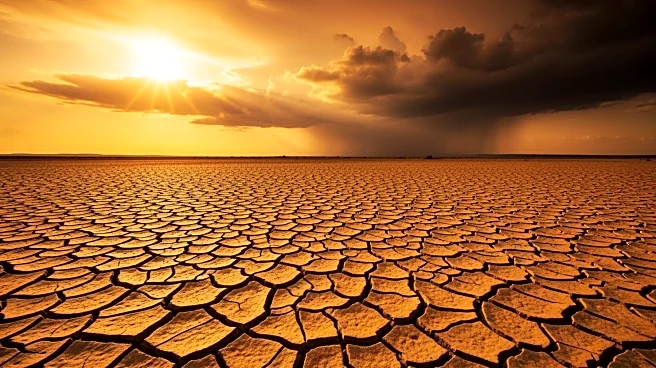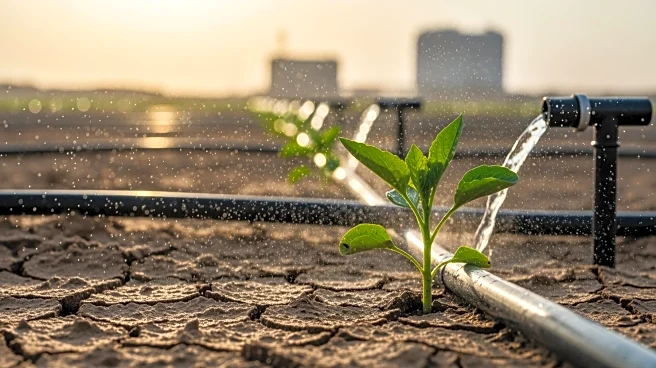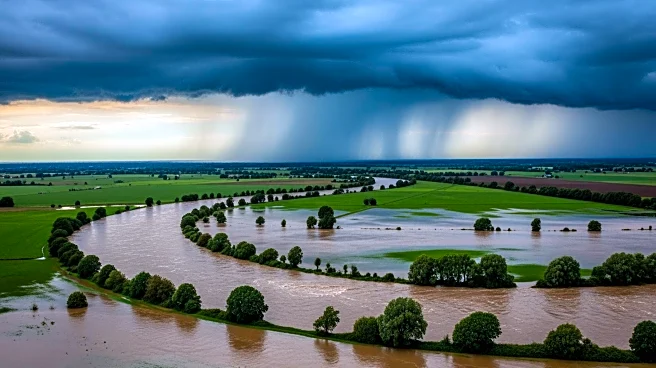What's Happening?
Following a record-breaking heat wave, Israel is experiencing a significant weather shift with local showers and isolated thunderstorms. The Israel Meteorological Service has issued flood warnings for
the coastal plain and the Shfela, with concerns about flash floods in streams of the Judean Desert, the Dead Sea area, and the Arava. Rainfall has been recorded in various locations, with Beersheba seeing the highest total at 26.9 mm. Firefighters are actively rescuing individuals from flooded areas, including a pickup truck swept away in a flash flood and cars stuck in flooded streets. Residents in Elkana have been evacuated due to flooding, with water levels reaching about a meter in some apartments.
Why It's Important?
The sudden change in weather conditions highlights the challenges of managing extreme weather events, which can have significant impacts on infrastructure and public safety. The flood warnings and subsequent rescues underscore the importance of preparedness and response capabilities in mitigating the effects of natural disasters. The shift from heat wave to potential flooding also illustrates the volatility of weather patterns, which can affect agriculture, water resources, and daily life. The readiness of emergency services to handle such situations is crucial in minimizing harm and ensuring public safety.
What's Next?
The weather is expected to stabilize with partly cloudy skies and a slight rise in temperatures on Wednesday, followed by further warming on Thursday and Friday. The Israel Meteorological Service will continue to monitor conditions and provide updates as necessary. Emergency services remain on high alert, with water-rescue units and command centers prepared for any further developments. The focus will be on ensuring safety and minimizing disruptions as the weather transitions.
Beyond the Headlines
The recent weather events in Israel may prompt discussions on climate change and its impact on weather patterns. The record-breaking temperatures followed by sudden flooding could be indicative of broader environmental shifts. This situation may lead to increased attention on sustainable practices and infrastructure improvements to better handle extreme weather conditions. Additionally, the role of emergency services in disaster response may be evaluated to enhance future preparedness.













